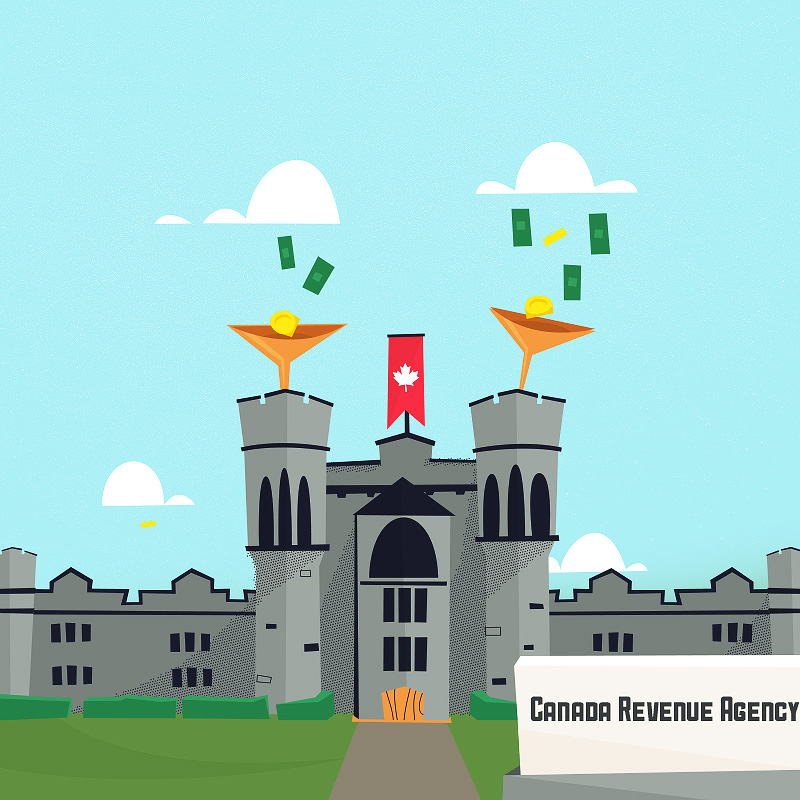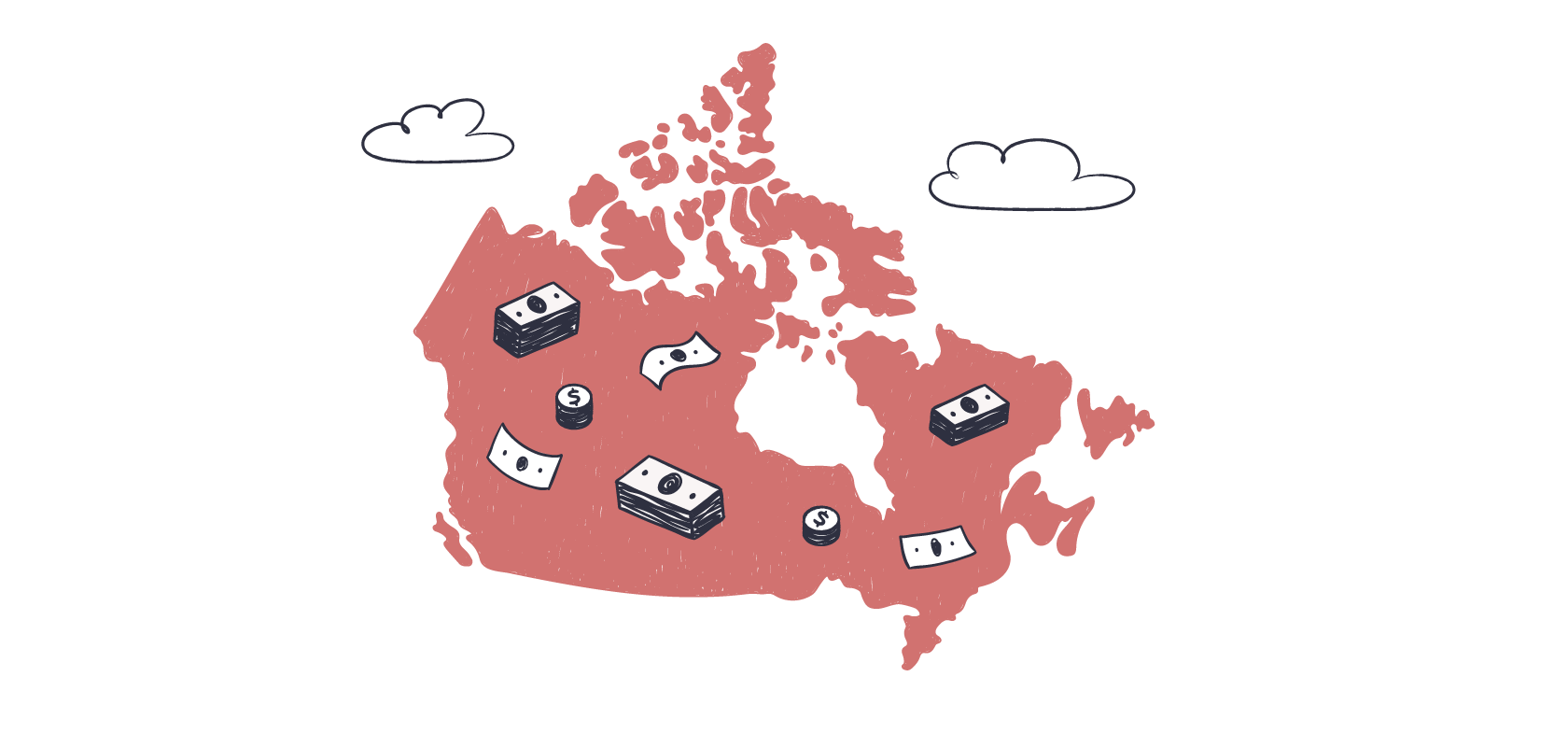Become an insider!
Get our latest payroll and small business articles sent straight to your inbox.
As an online payroll company, one of the features of our payroll app is to handle government remittances for our clients. But what makes up these remittances? Which agencies do small businesses need to remit to in order to stay compliant? In order to answer all these questions, we decided to put together an article about payroll taxes in Canada.
In every modern state, the primary collector of government tax revenues is payroll. For example, according to the Canadian Payroll Association, payroll is responsible for collecting more than $250 billion in annual Canadian federal and provincial government taxes.
These aren’t just personal income tax, Canada Pension Plan (CPP) and Employment Insurance (EI) amounts. And it’s not just the Canada Revenue Agency that these amounts are paid to. On the provincial or territorial level, there are a variety of agencies to which payroll makes remittances.

The CRA is the primary federal agency that collects government revenues from employers, via the payroll function. Payroll remits the following government revenues to the CRA:
- Federal and provincial personal income taxes.
- Canada Pension Plan contributions
- Employment Insurance premiums.
- Garnishments of EI benefit overpayments.
- Sales taxes (GST and HST) on employee taxable benefits (except for Quebec).
- Employer remittances to the Nova Scotia Workers’ Compensation Board.

Like the CRA, the province of Quebec has centralized the collection of virtually all government tax revenues in the hands of one government agency, Revenu Quebec. Payroll remits the following to Revenu Quebec:
- Quebec personal income taxes.
- Quebec Pension Plan contributions.
- Quebec Parental Insurance Plan premiums (QPIP).
- Employer contributions to the Commission des normes du travail (CNT).
- Employer contributions to the Health Services Fund (HSF).
- The compensation tax paid by financial institutions.
- The 1% tax for the Workforce Skills Development and Recognition Fund (WSDRF).
- WCB premiums owing to the Commission de la sante et de la securite du travail (CSST).
- The GST and Quebec Sales Tax (QST) on RL-1 reported taxable benefits.
- The 9% sales tax on group employee benefits.
- Payroll taxes to fund provincial health care in Manitoba, Ontario and Newfoundland and Labrador.
- The 2% payroll taxes levied by the Northwest Territories and Nunavut.
- The 8% Ontario and 9% Quebec sales taxes on employee group benefits.
The two basic things that payroll has to understand about each of the above is which government has jurisdiction over these and whether these are employer paid, employee paid or both.
In Canada, both the federal and provincial, or territorial, levels of government have the right to tax employment. Although the CRA collects most personal income taxes (all jurisdictions except Quebec), each province or territory sets its own personal income tax rates.
- This means that when withholding personal income tax, employers have to know which provincial or territorial rates apply.
- Similarly, employers have to know whether employees are subject to CPP or QPP or whether they as employers are liable for Quebec HSF or Ontario EHT contributions

This is determined by the province of employment. This is either the province where employees physically report to work or if they don’t physically report to work at an employer permanent establishment, the province from which payroll is processed. For example, the city of Lloydminster straddles the Alberta-Saskatchewan boundary. An employee could live on the Saskatchewan side, but if this person physical reports to work at an employer’s permanent establishment on the Alberta side, Alberta would be the province of employment.
The province of employment is also the basis of most other payroll related taxes, with the following exceptions:
- The 2% payroll tax in the Northwest Territories and Nunavut is levied based on physically performing employment services in those jurisdictions. For example, an employee could live in Yellowknife and work remotely for an Ontario employer, by telephone, video conferencing and e-mail. The 2% NT payroll tax would apply because employment services are performed in the NT, even though the province of employment was Ontario, where that person’s payroll was processed.
- Similarly, employer WCB premiums are payable based on where the employment is physically located. However, there is no WCB for employment regulated under the federal Canada Labour Code. Instead, federally regulated employers have to supply WLRP benefits equivalent to the WCB coverage that would otherwise apply.
- Retiring allowances, income subject to the lump-sum withholding method and other T4A reportable income are taxed based on the province of residence. For example, a Quebec employee could retire and move to Vancouver Island. If a retiring allowance is paid after this move, the lump-sum withholding rates are those for other than Quebec. Similarly, the payment is not reportable on an RL-1.
Where it gets complicated is if the province of employment is not the sole basis on which a payroll tax applies. For example, Quebec uses a modified version of the province of employment in assessing the following taxes: QPIP, CNT, WSDRF and the compensation tax. The rules are too complex to describe here, but they relate to employees who work both within and without Quebec within a single pay period.
Similarly, Ontario and Quebec use both the province of employment and the province of residence to apply provincial sales taxes on employee group benefits. Employee contributions to group benefit coverage are based on residence. By contrast, where there is a current employment relationship, these sales taxes on employer-paid group benefits apply based on the province of employment.
Personal income tax and the 2% NT and NU payroll taxes are employee-paid. CPP, QPP, EI, QPIP and the ON and QC sales taxes on employee group benefits have both employer and employee portions. The remaining taxes, including WCB premiums and the other Quebec payroll taxes are employer-paid.
![]()











